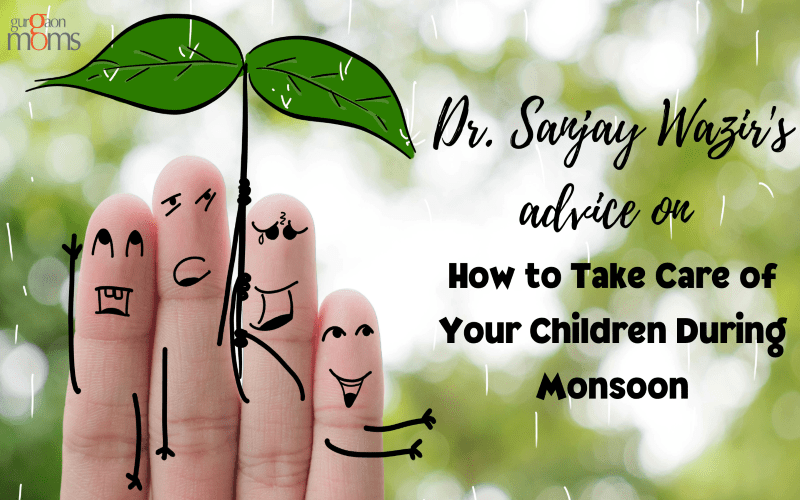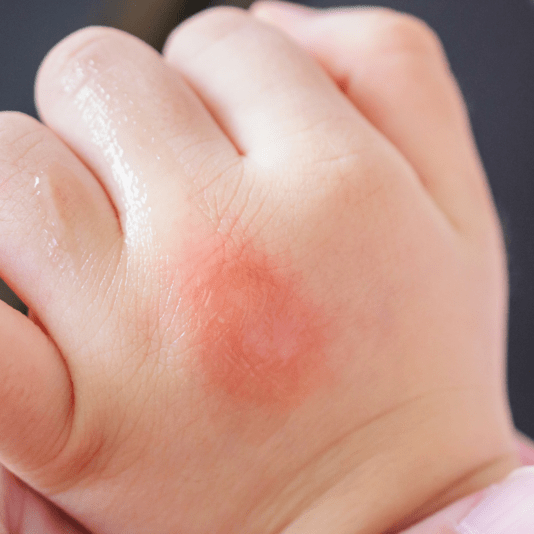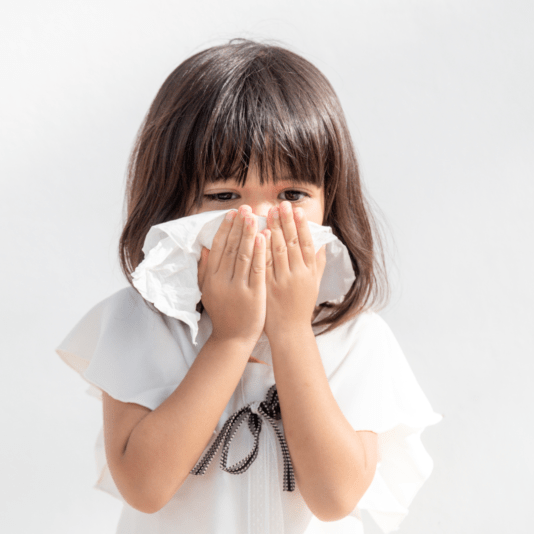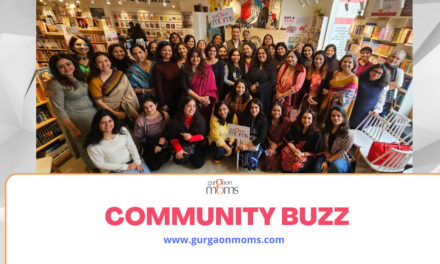Anyone who says sunshine brings happiness has never danced in rain
Rains after the blistering summer months where the Sun is in its full fury, are always a welcome relief for everyone. However, all good things come with a price. Monsoons are a relief from the heat but they bring their own set of problems for health, especially for kids. Thankfully most of the problems are not serious or at least preventable and as parents, we must know how to handle these on day to day basis.
After the summer break, when children return to school, there is a sudden surge in the incidence of viral infections manifesting as fever, diarrhoea, and vomiting. This could be alarming to many parents.
- Fever can be controlled by giving paracetamol and the child should rest at home.
- Offer lots of fluids to the child. Most of these viral fevers would settle usually in 72-96 hours and the child does not need to be seen by a doctor immediately.
- Only if the fever is persisting even after 72 hours (once the effect of paracetamol wears off after 6 hours), or if the fever is more than 102 for more than 48 hours, or if the fever is associated with rash or any other unusual symptom not seen in the child before, it may be prudent to visit a doctor. Height of fever should not raise a concern but persistence should.
- Because of the risk of waterborne diseases like typhoid, it is important to avoid uncooked or partially cooked food and sterile water from outside.
- In case your child still has gastroenteritis, it is important to use rehydration solution, coconut water or any other fluid containing water and electrolytes to keep the child hydrated.
- If the vomiting is persistent and the loose motions are very intractable, causing dehydration signs like dry eyes, dry mouth etc, it would be a good idea to see a physician.
With monsoons, the mosquitoes also breed faster and children become more prone to developing mosquito-related diseases like malaria, dengue etc. It is important to protect children against arthropod bites.
- It is important to wear full-length clothing made from cotton
- Use shoes and socks while going out in the evening instead of open footwear and generous use of mosquito repellent creams.
- Citronella or various botanical oils and herbal preparations are either minimally effective or ineffective against mosquito bites despite the positive public perception based on these products being derived from naturally occurring substances compared to synthetic products containing DEET and N, N Diethyl Benzamide. Creams containing these ingredients are quite effective in their use over the last 70 years and are considered the gold standard for use against mosquito bites.
- The bands and mosquito repellant patches are not very effective in a child who is very active and running and hence cannot be relied upon for the same.
- Also, make sure that there is no collection of stagnant water in your house or near your house that acts as a breeding ground for such mosquitoes.
Monsoons do tend to create damp areas in the house at times and also make the upholstery a little damp wherein fungal moulds or dust mites increase. As a consequence, some of the children who may have asthma or another allergic disorder, see an increase in the symptoms during this time. If your child is predisposed to asthma, it’s a good idea to treat the damp areas in the house and also vacuum your curtains, rugs sofas or any other piece of upholstery at least once a week to reduce the impact.
During this season, children also tend to suffer from multiple episodes of upper respiratory tract infection causing cough and the cold.
- Most children would get better by giving them lots of love and 1 teaspoon of honey 3 to 4 times a day.
- All coughs do not need to be treated with medication. The cough may last for around 2 to 3 weeks. Only if the cough is disturbing the sleep significantly or the cough is causing the child to have persistent vomiting, it is prudent to treat a cough with a cough suppressant but otherwise, the self-resolution does happen over a few days.
- Getting a flu vaccine in eligible children less than five years of age or even in those more than five years of age with an underlying chronic condition involving the heart, lungs or kidneys is recommended every year.
Because of the intense heat and perspiration during activity, children tend to develop a lot of heat rashes and friction rashes in sensitive areas like the axialla and groin.
- It’s a good idea for the children to wear full-length cotton clothes.
- Using some cool towels may help reduce the impact of heat rash.
- In case the friction areas like groins and axilla become intensely involved, then you should consult the doctor.
In the humid environment during the monsoon season, there is a lot of perspiration in active children. People who send your children play make sure that one hydrate before the exercise, with water or a salt sugar solution similar to ORS
With these simple measures, you would be able to enjoy the rainy season with your children without any hassles.
This article is by Dr. Sanjay Wazir-MBBS, MD – Pediatrics
Dr. Sanjay Wazir is currently working as Medical Director (NCR) – Neonatology at Motherhood Hospital, Gurgaon. With over 20 years of extensive experience in the field of Pediatrics and Neonatology, he has been actively involved in teaching and has worked as a visiting faculty across various colleges and forums. Dr. Wazir is also the author of the book ‘Bundle of Joy’.









